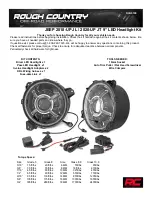
The radio can receive the complete
AM and FM bands.
Those bands cover these frequen-
cies:
AM band: 530 to 1,710 kHz
FM band: 87.7 to 107.9 MHz
How well the radio receives stations
is dependent on many factors, such
as the distance from the station’s
transmitter, nearby large objects,
and atmospheric conditions.
Driving very near the transmitter of
a station that is broadcasting on a
frequency close to the frequency of
the station you are listening to can
also affect your radio’s reception.
You may temporarily hear both
stations, or hear only the station you
are close to.
A radio station’s signal gets weaker
as you get farther away from its
transmitter. If you are listening to an
AM station, you will notice the sound
volume becoming weaker, and the
station drifting in and out. If you are
listening to an FM station, you will
see the stereo indicator flickering off
and on as the signal weakens.
Eventually, the stereo indicator will
go off and the sound will fade
completely as you get out of range of
the station’s signal.
Radio stations on the AM band are
assigned frequencies at least 10 kHz
apart (530, 540, 550). Stations on the
FM band are assigned frequencies at
least 0.2 MHz apart (87.9, 88.1, 88.3).
Stations must use these exact
frequencies. It is fairly common for
stations to round off the frequency in
their advertising, so your radio could
display a frequency of 100.9 even
though the announcer may identify
the station as ‘‘FM101.’’
CONTINUED
Radio Frequencies
Radio Reception
Radio Reception
Fe
a
tu
re
s
231
06/05/19 14:48:01 31STK600 0236
Summary of Contents for 2007 RDX
Page 174: ...168...
Page 185: ...Audio System Features 179 U S model is shown RDX with Technology Package model...
Page 282: ...276...
Page 410: ...404...
Page 426: ...420...
















































